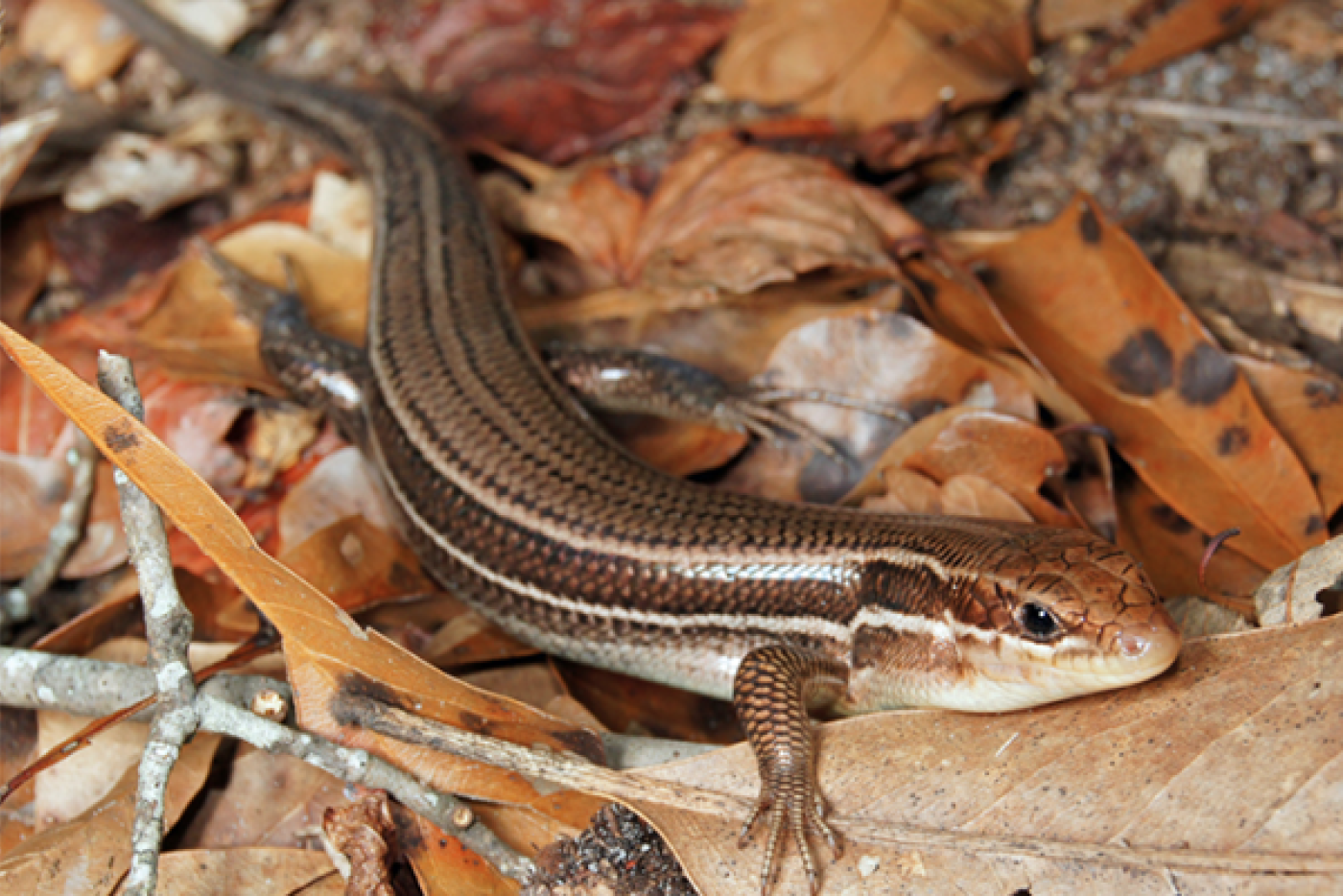Broad-Headed Skink

Scientific Name: Plestiodon laticeps
Photo Credit: Ian Deery
Broad-headed skinks, Plestiodon laticeps, grow to be the largest skinks in our region, reaching lengths of approximately 6.5 to 12.75 inches. Adult individuals typically show an olive-brown coloration. During breeding season, male heads turn bright orange or red, fading by early summer. Adult females often retain light striping and may look similar to five-lined skinks. Juveniles are dark brown or black, marked with five to seven yellow stripes and vivid blue tails. A distinguishing feature from five-lined skinks is the presence of five labial scales instead of four.
In North Carolina, they appear across most lowland and mid‑elevation areas, avoiding only the northern mountains and barrier islands.Their preferred habitats include swamp forests, moist hardwood and mixed forests, cypress swamps, and even abandoned urban lots with debris. These skinks are semi‑arboreal and are often seen in trees, using branches, tree cavities, and loose bark. Nesting areas often include decaying stumps, sawdust piles, hollow logs, and cavities in trees .
These skinks are carnivorous, feeding mostly on insects such as grasshoppers, butterflies, beetles, spiders, and cockroaches, and occasionally on earthworms, mollusks, small reptiles, rodents, and even other skinks.
Young skinks are often mistakenly referred to as “scorpions” because of their bright blue tails and habit of thrashing them when threatened. In reality, they are completely harmless to humans. Although a large adult may deliver a noticeable bite, broad-headed skinks are non-venomous and pose no danger.
Mating typically happens in April and May, with females depositing between 8 and 22 eggs in June or July. In some regions, females guard their nests in hollows made of bark or logs, and young hatch around July to September.
Explore the full species profile, including their habitat, diet, and behavior on Herps of NC.
